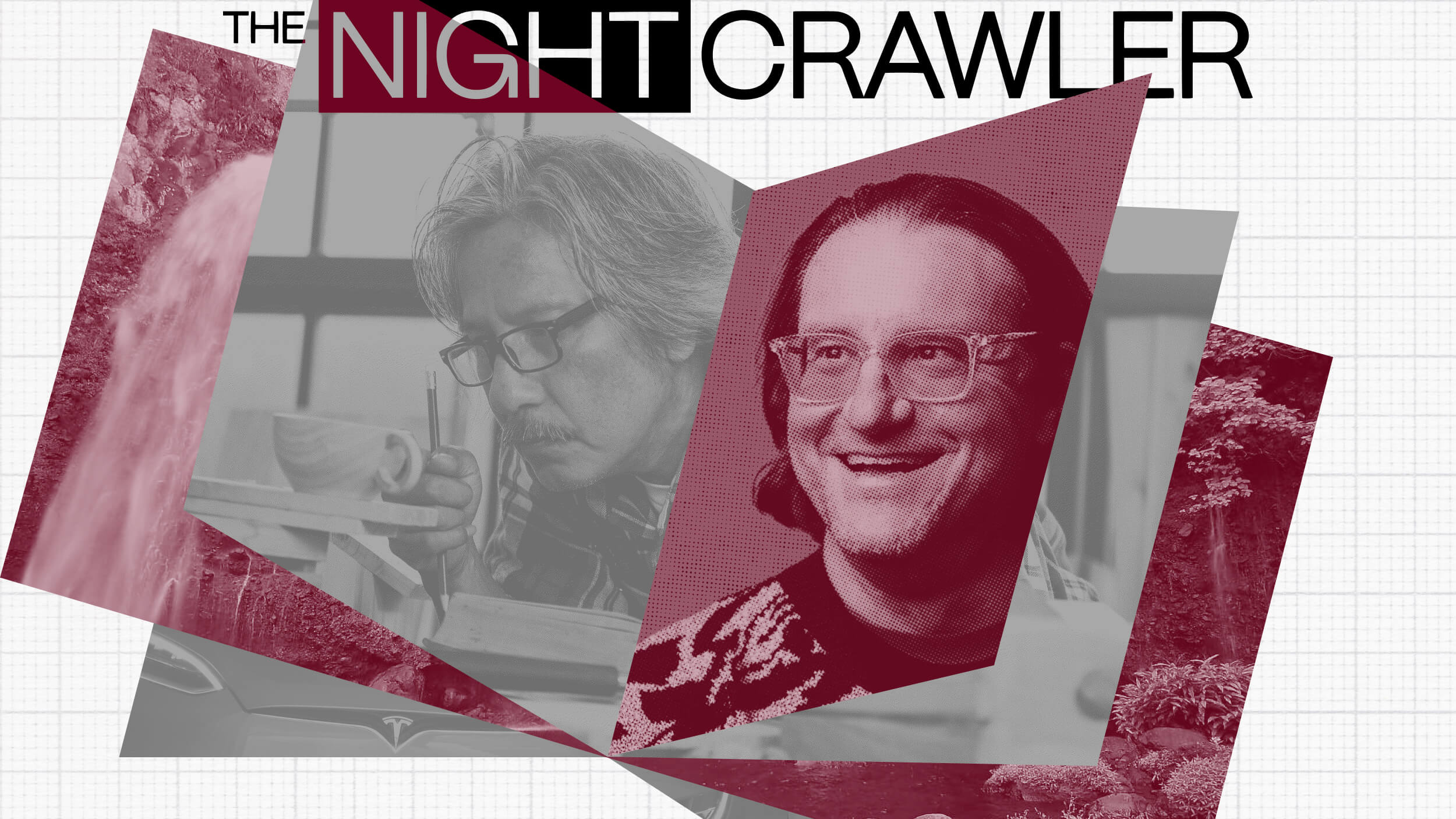You’ll need a serious technical grounding in art, but more importantly, an instinct for avoiding “over-sophistication.”
Question: What is an illustrator’s basic toolkit?
David Small: Hmm. That's a good question. I haven't been asked that one. But relating back to Stitches a little bit, people ask me frequently why I chose to do it in black and white. And that would be my first answer to your question about art materials: that first of all, I think drawing is really the basis of all art, even sculpture, film. The greatest filmmakers have always been able to at least roughly sketch out their ideas in storyboards. And black and white in particular is a good place to start. I stayed with black and white charcoal drawings for years and years and years, maybe—I think I was maybe 38. I started the serious study of art when I was 21. When I was 38 and did my first picture book, I had to start thinking about color. And that's when I found that that whole basis of working in black and white and grays became the basis of my understanding of color, because it's all about tone, it's all about light and dark. If you don't get that, then your color work is going to be a mess. So that's the beginning of the toolkit: drawing and black and white media. In terms of surprises, I'm always surprised by the things that come to me through literature. I think it's really important for any artist to expand themselves in some other area. You know, I've taught—I used to teach on a college level, and I've taught in schools where kids just wanted to be artists, and I used to be furious with them if they didn't read, because they just seemed so—their education seemed so thin if all they could do was pick up a paint-loaded brush and fling it at a canvas. I mean, there was nothing to express there, except maybe their own personal feelings. But if they're not—if they don't have a grounding in the way these things have been expressed by other people down through the centuries, then they're lost. They're pretty much—you know, they're reinventing wheels that don't need to be invented any more. Things come to me through literature and also my study of film that are constantly surprising and enriching for me. So I'm not talking so much about artistic tools as I am about things that come out of the air.
Question: What advice would you give someone writing or drawing for children?
David Small: Do what you feel like, you know, what you think is right. That would be my—I don't have any theories about it, you know. I just—and I actually, even though I have this solid career in picture books, I've not only been thinking about kids—because I don't think that much about children; I'm not a child educator; I'm just a former child. And I know what I would have been enchanted by or interested in as a kid, so even when some art directors early on in my career would say, oh, no, no, no, no, no, you can't draw that way; that's much too loose for kids to understand; well, all that's been proven as bunk, because people like Jules Feiffer are doing things for kids. And you know, Feiffer is the Daumier of our age; his stuff is just so loose and wiggly and, you know, looks like it's out of control although there's perfect control behind it. And kids love that stuff; they eat it up. Or Quentin Blake is another guy that—the guy who illustrates Dahl's stories—Roald Dahl's stories, not doll stories.
I've always been interested in a certain kind of sophistication in children's literature. I loved Roald Dahl; I loved the underlying nastiness of some of his—darkness of his tales. I loved a guy named Tomi Ungerer. You know, early Sendak things. And as a father—you know, that's what kind of got me into making this stuff is that I used to have to read some of this swill to my children 50 times a week, and while the kids actually seemed to be interested in certain books, they were putting me to sleep. But then when I'd get my hands on a Roald Dahl novel, suddenly I was able to invest my reading with some energy and, you know, real interest of my own and come to bedtime with real eagerness. And so there was a sharing between the kids and me. And that was the kind of books that I wanted to write and draw myself, the books that kind of straddled that fence between what would entertain a child and what would entertain parents too. I wrote a book called Imogene's Antlers, which I think is a good example of a book that kids and their parents enjoy. But I realize now that I sort of participated in a history of sophistication that—over-sophistication in children's literature: too much irony, too much sarcasm, too many jokes that the kids got left out of. There was a whole spate of picture books coming out for years and years and years where it was quite evident to me that it was the parents who were buying these books—it wasn't the kids who were choosing them—and that the parents had—they had sort of preempted—is that the word?—co-opted bedtime for themselves instead of—I mean, the worst thing I can think of is making a book where—I have this vision of a dad sitting on a bed with his daughter or his son and laughing his ass off, and the kid's sitting there just totally left out of the joke. And also the parent not being able to explain why it's funny—that's bad. And that's what's—that's what I try to do in my picture books, is to be all-inclusive, but not exclusive, to not exclude the kid and not exclude the parents from the experience. And it's not a very easy task; you can't find stories that work that way too much of the time.
Recorded on November 18, 2009
Interviewed by Austin Allen





